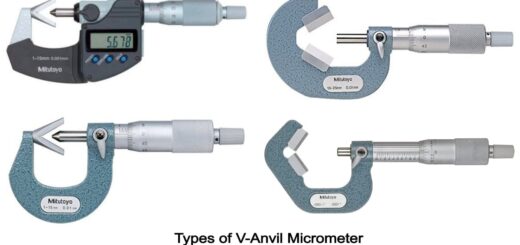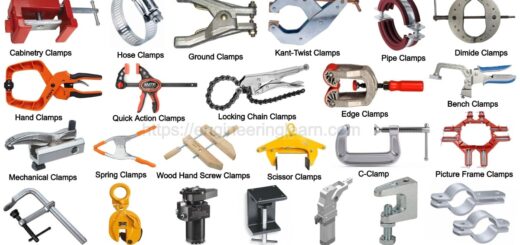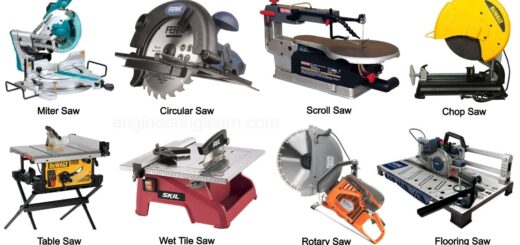Roofing Bar: Definition, Parts, Materials, Uses & Alternatives [Complete Guide]
![Roofing Bar: Definition, Parts, Materials, Uses & Alternatives [Complete Guide]](https://engineeringlearn.com/wp-content/uploads/2023/04/Roofing-Bar-1024x539.jpg)
Roofing Bar Introduction:
Roofing Bar: Definition, Parts, Materials, Uses & Alternatives [Complete Guide]: – Your house is quite possibly the greatest venture you will at any point made in the course of your life. That is the reason it means a lot to finish it off with the roofing system that can best safeguard it. A roofing bar will keep going for a really long time, so you need to be certain you’re getting the right type of roofing bars for your home or any commercial building. Style, functionality, usefulness ,and execution are exceptionally significant factors, yet there are others that frequently get neglected.
Keeping a sound roof in a real sense is the best rundown of pivotal home repairs. It ensures that you and your family will feel warm and dry, close by everything in your home. Another roof is an expensive recommendation. These simple and straightforward repairs or fixes can keep your existing roof sound for quite a long time in the future.
What is a Roofing Bar?
A roofing bar, otherwise called a roofing clamp, is an expert hand tool used to quickly and precisely space battens on a roof, accelerating the whole roofing process. A batten is generally a length of timber that evenly spans the width of a rooftop. Plastic and metal battens are additionally accessible.To cover joints providing a fixing and support tiles or slates battens are mostly utilized. In rows which are even battens are placed horizontally across the rafters. Battens likewise support the overlapping or covering tiles ,so they should be used correctly to ensure that roof is weather-tight.
Buying a new roofing bar can be an astounding endeavor, nonetheless, it isn’t something you should do at regular intervals. Pick a product that is going to endure to save money and avoid the burden of going through messy construction consistently.
Parts of Roofing Bar
Below are mentioned parts of a roofing bar: –
1. Handle
The handle, with a soft and delicate, non-slip, PVC coating is pushed down to grip the strip batten between the jaws.
2. Jaws
The jaws of the roofing bar solidly or immovably grip the batten as it is being positioned, ensuring accurate placement.
3. Jaw Locking Knob
The jaw locking knob is utilized to lock the jaws into position whenever they have been adjusted to suit the width of the batten The knob allows batten widths of between 25mm (1 inch) and 80mm (3 inches). It is notched for easy handling.
4. Measurement Scale
The roofing bar includes or incorporates an underlying or inherent, simple-to-read scale for exactly setting the distance between the battens. The scale is marked in centimeters and permits fine adjustments to be made while on the roof without the requirement for extra measuring tools.
5. Measurement Knob
The measurement or estimation knob, related to the scale, enables fast and easy positioning. The knob likewise goes about as a stop and, being used, is placed against the lower batten to ensure that the new batten, gripped or held between the jaws, is fixed at the right spacing.
6. Loop
The loop toward the end of the roofing bar permits the tool to be clipped to a tool belt when on the rooftop, so it is always ready to hand. It additionally empowers the tool to be tied to any fixed object while working at height, to prevent it from falling. Furthermore, the loop can be utilized to hang the roofing bar up when not being used.
What are Roofing Bar Made of?
A. Aluminum
The principal structure of a roofing bar is made utilizing aluminum alloy since it is solid and lightweight. The roofing bar weighs simply 469g so is effortlessly handled at height. Aluminum is soft but sturdy, versatile, and corrosion-resistant.
B. PVC
The handle of a roofing bar is PVC which is coated to give a superior grip. PVC is a relatively minimal-expense material and its flexibility implies that it has a wide variety of uses. One of the most widely produced plastic is PVC.
How to Use a Roofing Bar?
Step 1. Pick Up Batten
In the first step, you need to grip the batten in the jaws of the roofing bar, afterward close the handle to immovably hold the batten.
Step 2. Adjust Jaw Grip
You need to adjust the jaw grip, utilizing the adjustment knob, to match the size of the batten you’re holding. The grip ranges from 25 – 80mm. The jaw grasp ought to be strong enough that it won’t slip off the batten.
Step 3. Hold Bar Straight
You want to place the rear of the roofing bar on top of the principal batten on the rooftop, with the measurement or estimation as well as assessment knob underneath the front of the batten and the bar held straight before you.
Step 4. Fix Batten in Place
You need to place the batten onto the roof and then fix it into position utilizing a nail gun, or a mallet and nails.
Step 5. Release Batten
You need to release the jaw grip, and then move onto the following batten.
Step 6. Space Battens
You need to proceed with the rooftop, spacing the battens uniformly.
Difference between Steel and Aluminum Roofing Bars
A) Steel Bars
Steel bars will have a lower cost so is an ideal choice in the event that you well thought out plan on utilizing them at times, but they will be heavier and normally square in shape, meaning they won’t be pretty much as quiet as aluminum bars.
B) Aluminum Bars
Aluminum will be lighter and generally stronger with higher weight limits. Aluminum bars are additionally aerodynamically formed and more classy looking. Aluminum bars frequently include T-track slots, giving additional fitting choices. Always be aware aluminum bars are more extensive than steel, so care should be taken while checking existing or future accessory fittings will be appropriate for the width.
What are the Alternatives of a Roofing Bar?
A) Batten Peg
A batten peg can be utilized to scatter the battens. In any case, this is just appropriate for small, one-off roofing jobs. The utilization of a roofing bar is fundamental for larger roofs as it will further develop and improve accuracy and make the work more effective.
To do this, you need to cut a small piece of wood to the size which is required, afterwards put it on top of each batten, and lay the following batten on top of the peg. Then, at that point, nail the batten to the roof utilizing a cordless drill or a hammer and nails. Keep laying battens along the roof until the battens are all set up.
B) Batten Spacer
On the other hand, you could utilize a batten spacer, otherwise called a batten gauge, to assist you with dispersing the battens on the roof.
The batten spacer is like a roofing bar and its length is adjustable for spacing battens. You can’t hold or grip with this tool, however, and it doesn’t have an user-freindly handle.
How can you take Care of and Maintenance of Roofing Bar?
It are anodized to roofing bars. This implies that a protective coating or covering is applied to their aluminum parts. Anodizing is long-lasting completion, that will safeguard the material bar from corrosion all through its life. Keep your roofing bar perfect and clean as well as dry by wiping it with a fabric after each utilization, and putting away it inside, ideally in a toolbox. Make sure to just utilize your roofing bar to place battens, according to the manufacturers guidelines, to ensure it will keep going for a long time.
Conclusion
Strong roofing bars don’t break without any problem. They might support some denting during hailstorms, yet high-velocity ice pellets can’t damage them seriously upon impact. Certain roofing bars weigh more than others. In that capacity, it’s a vital factor to consider as it could unfavorably affect your home’s whole entire integrity. It’s vital to take note that specific bars, similar to metal for example, requires significantly less maintenance making them ideal for occupied homeowners. Most of the present metal roofing bars, including those that contain iron, are impervious to water damage.
Image Source: – photopoint













